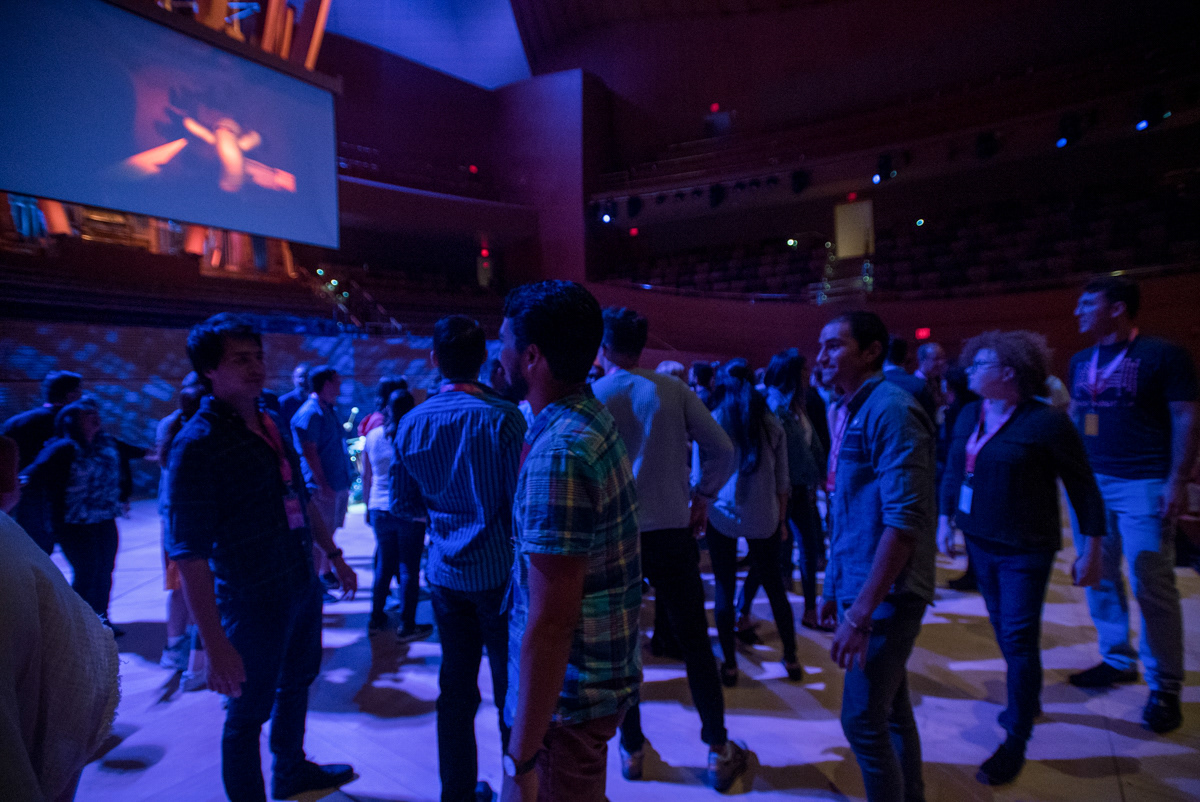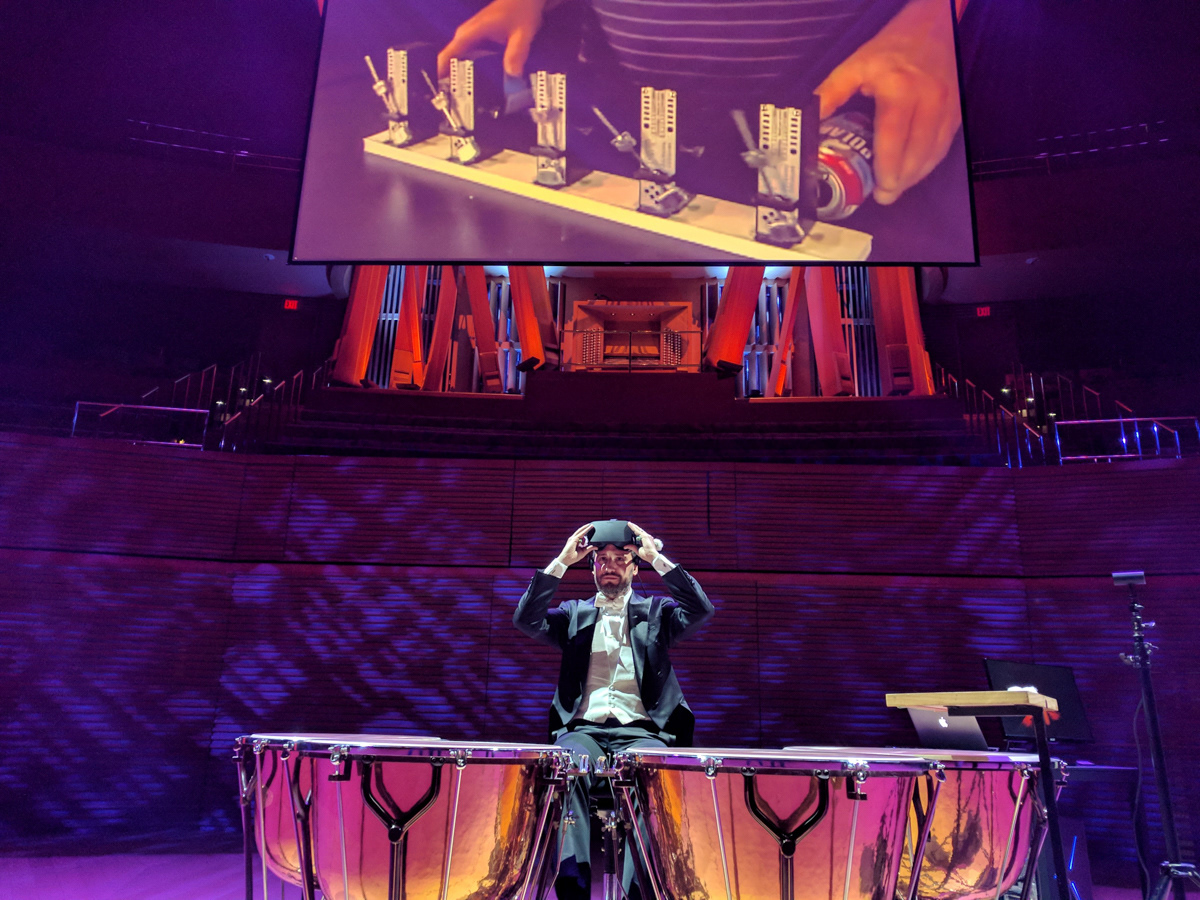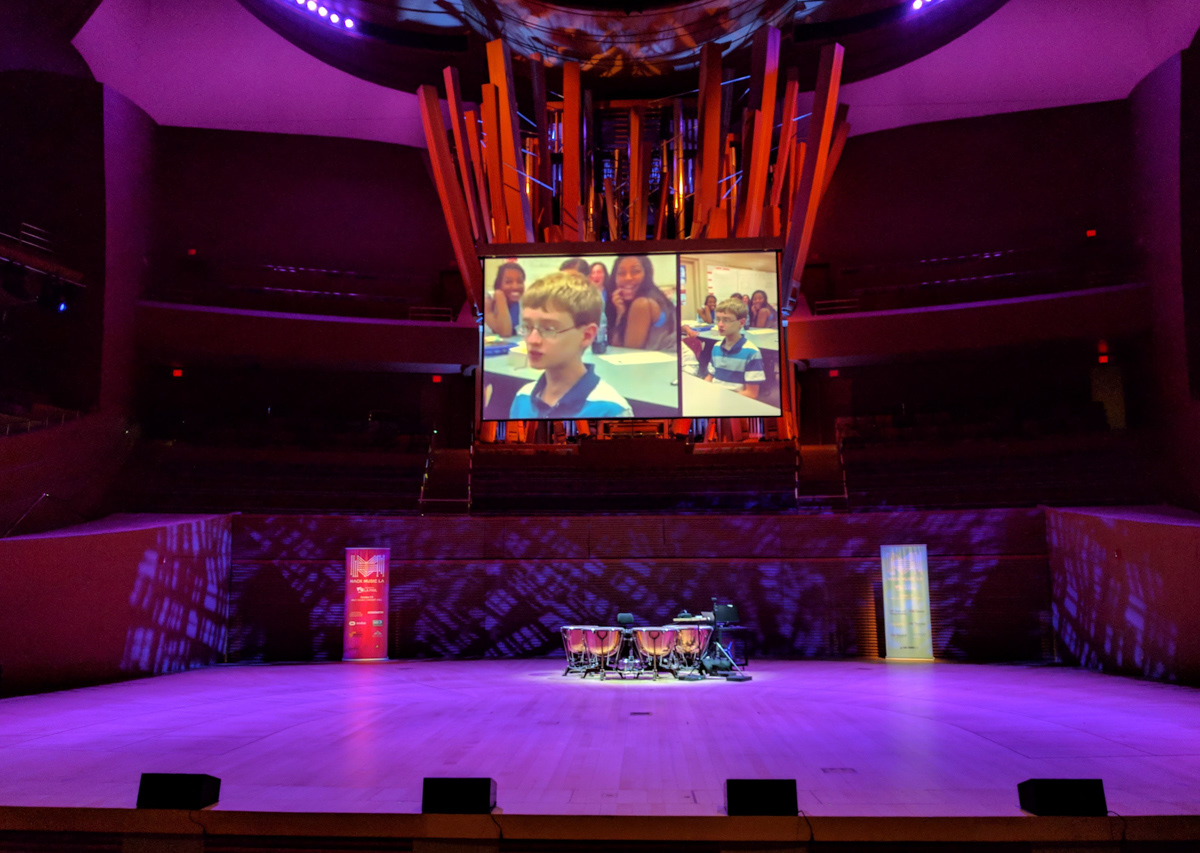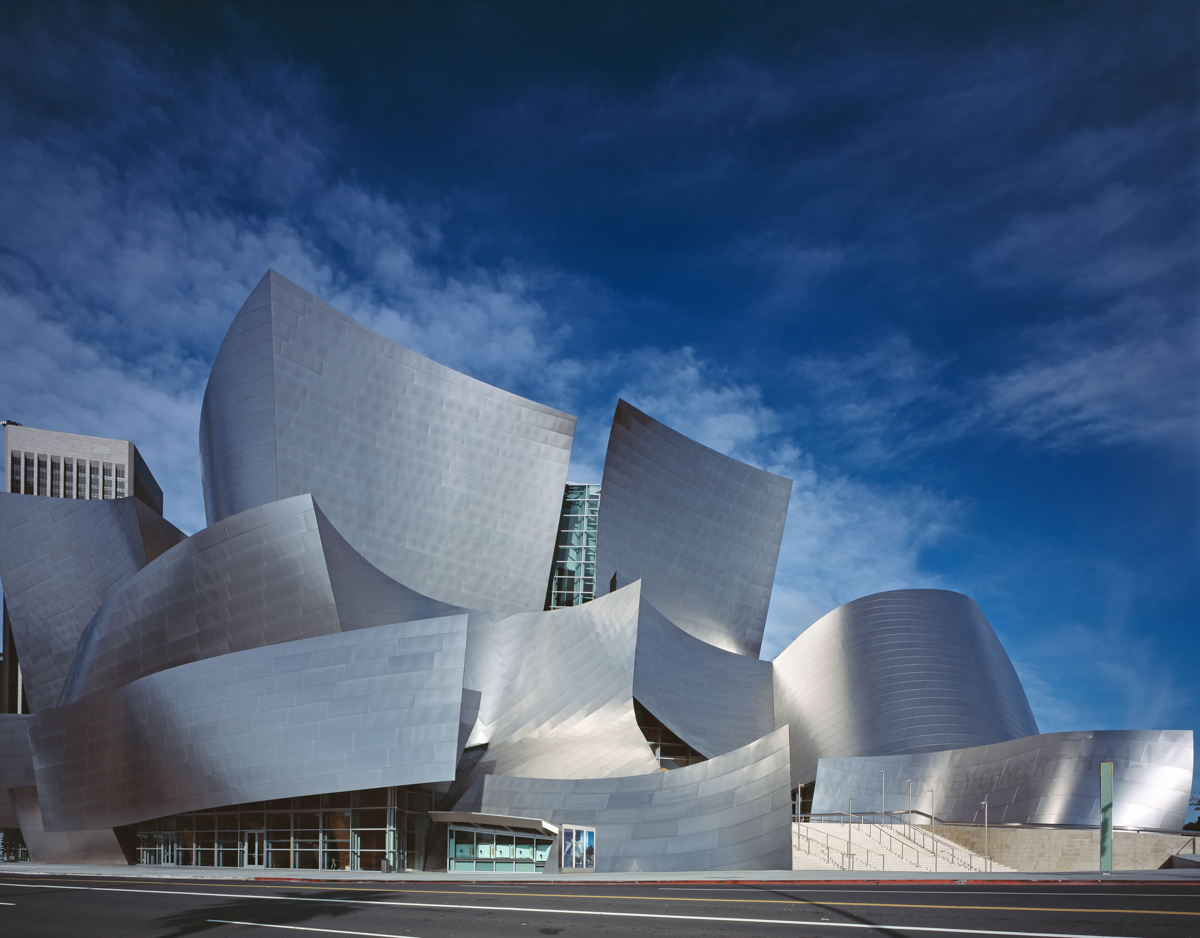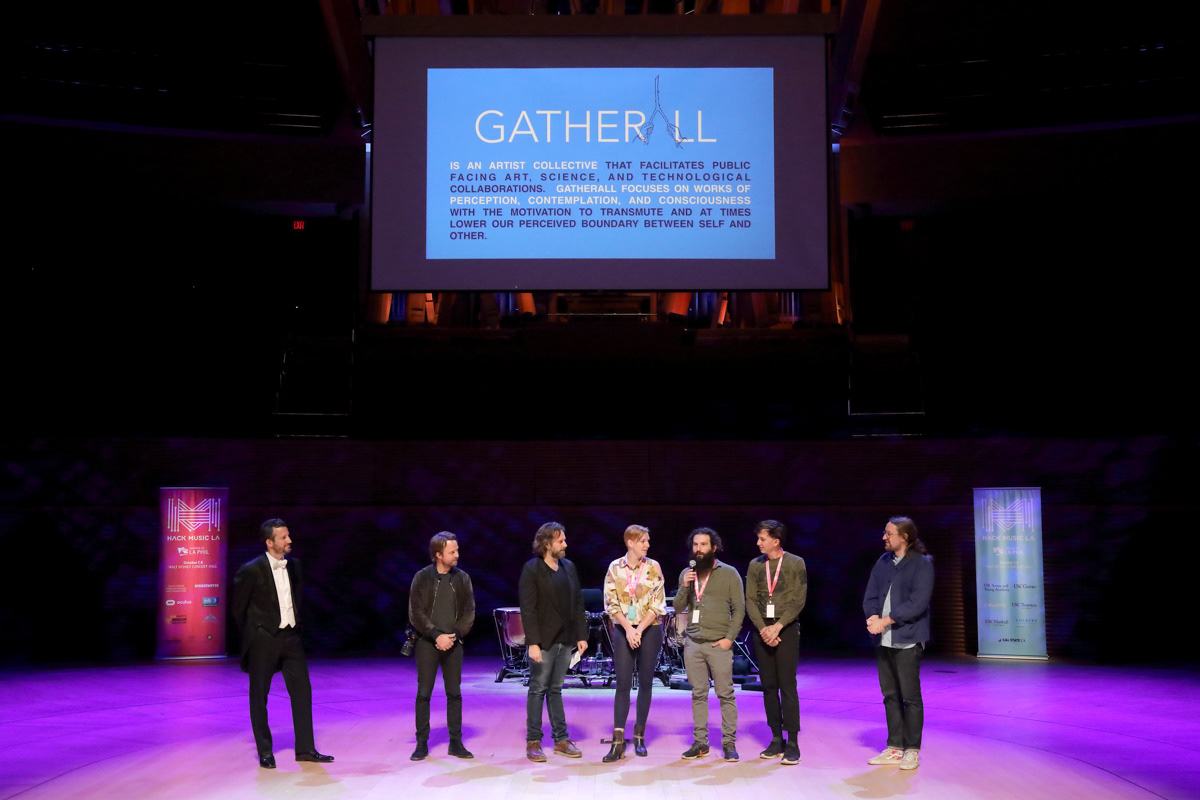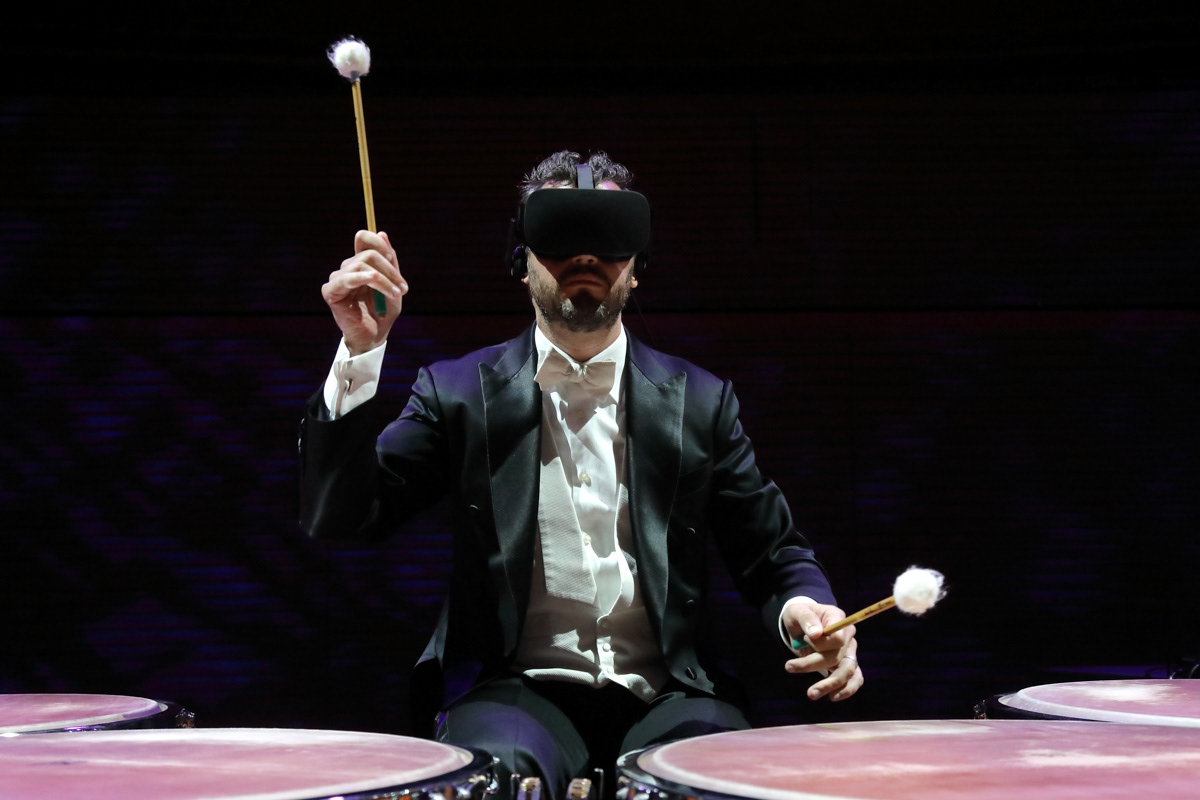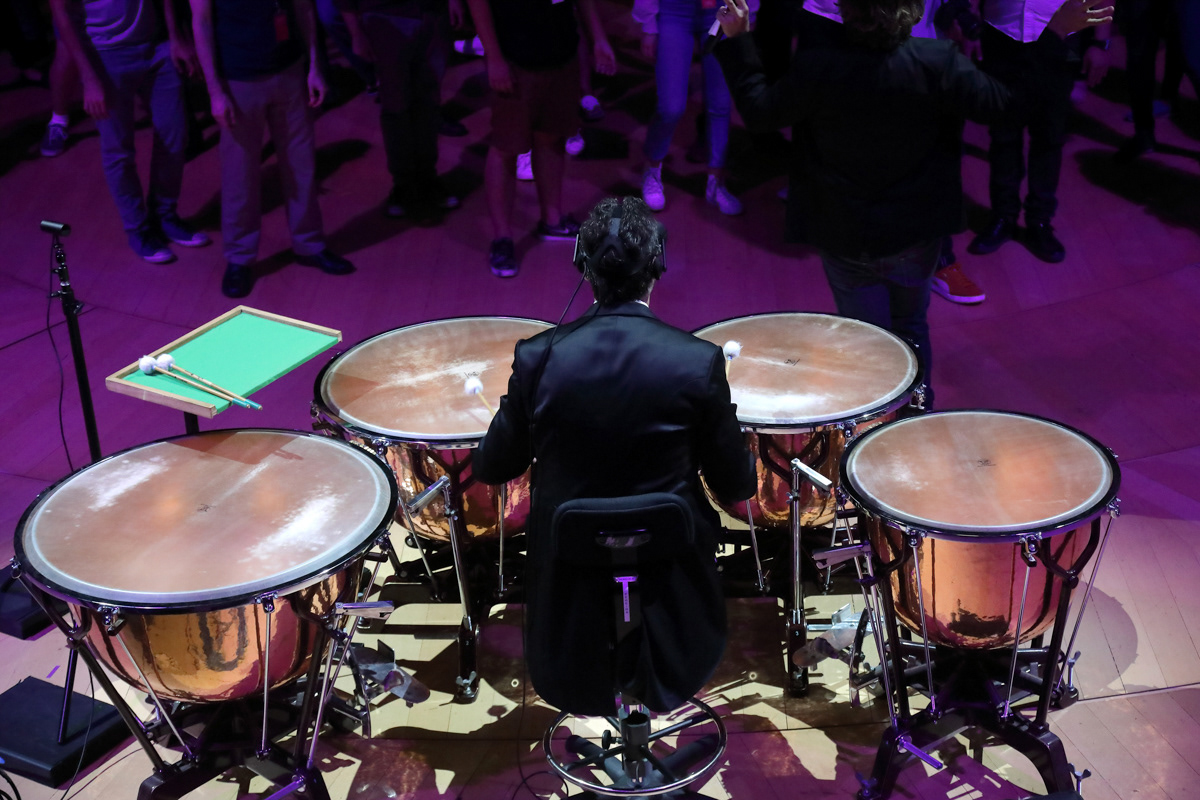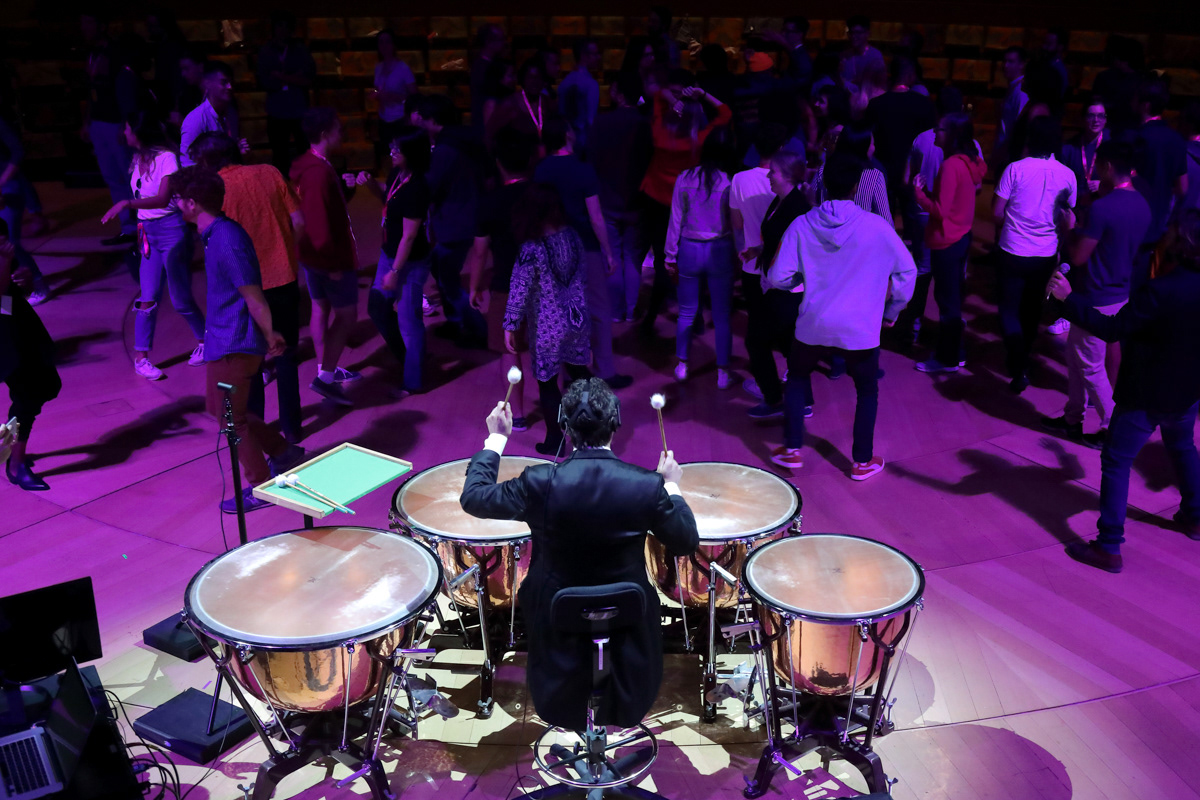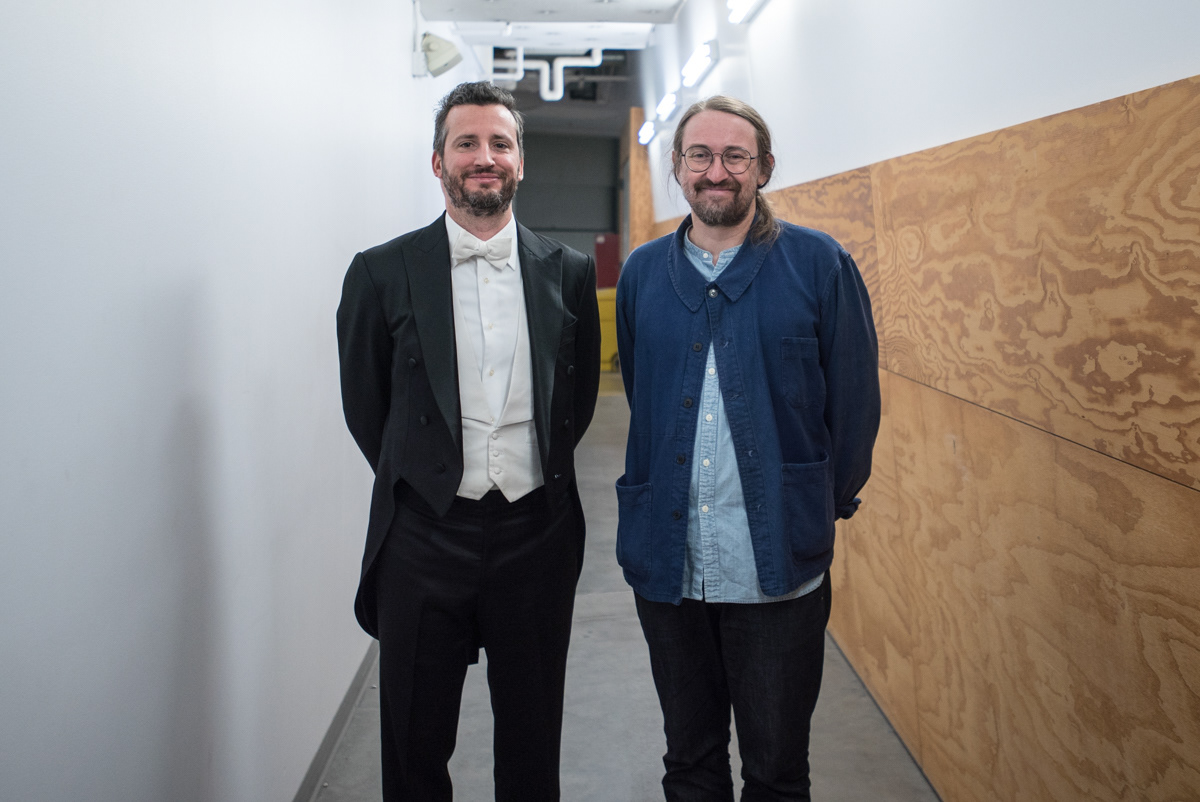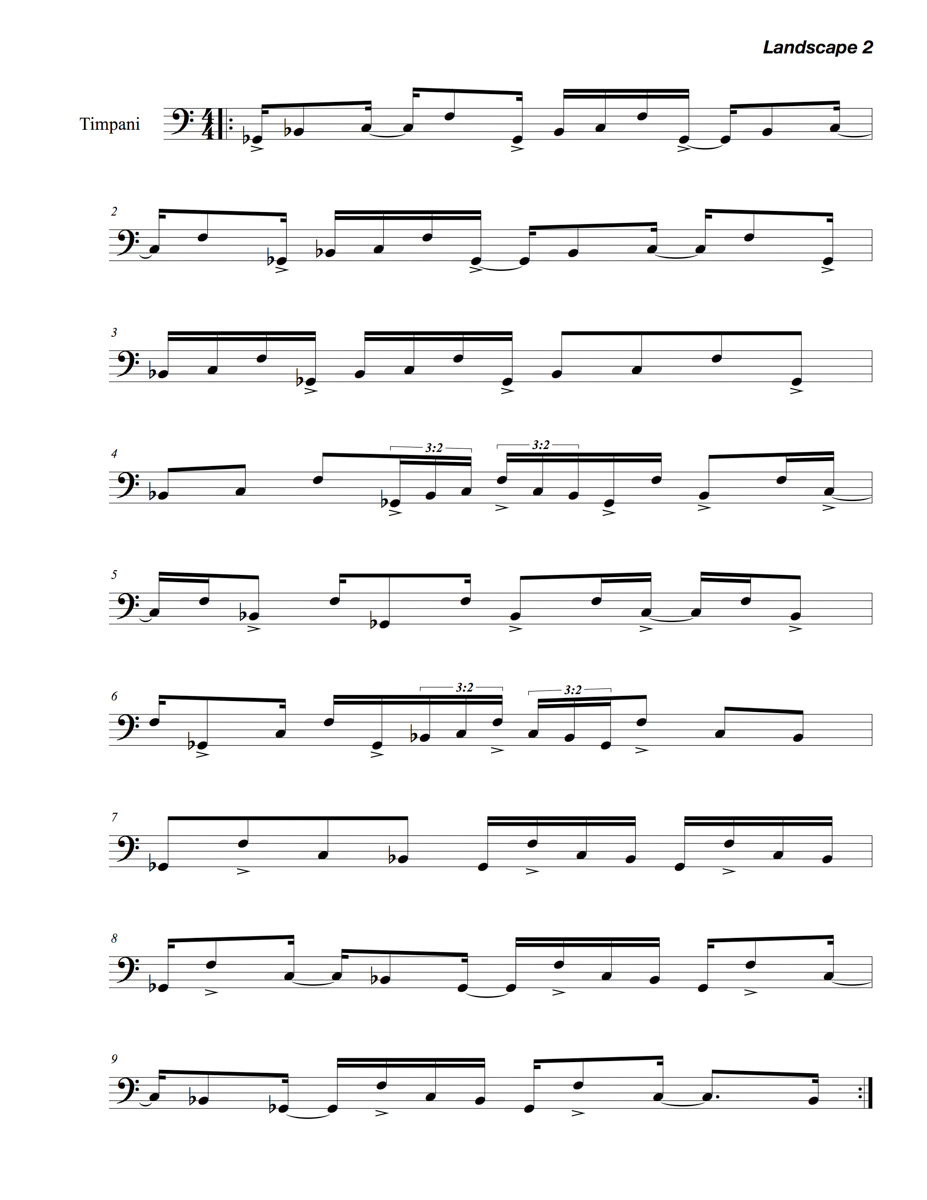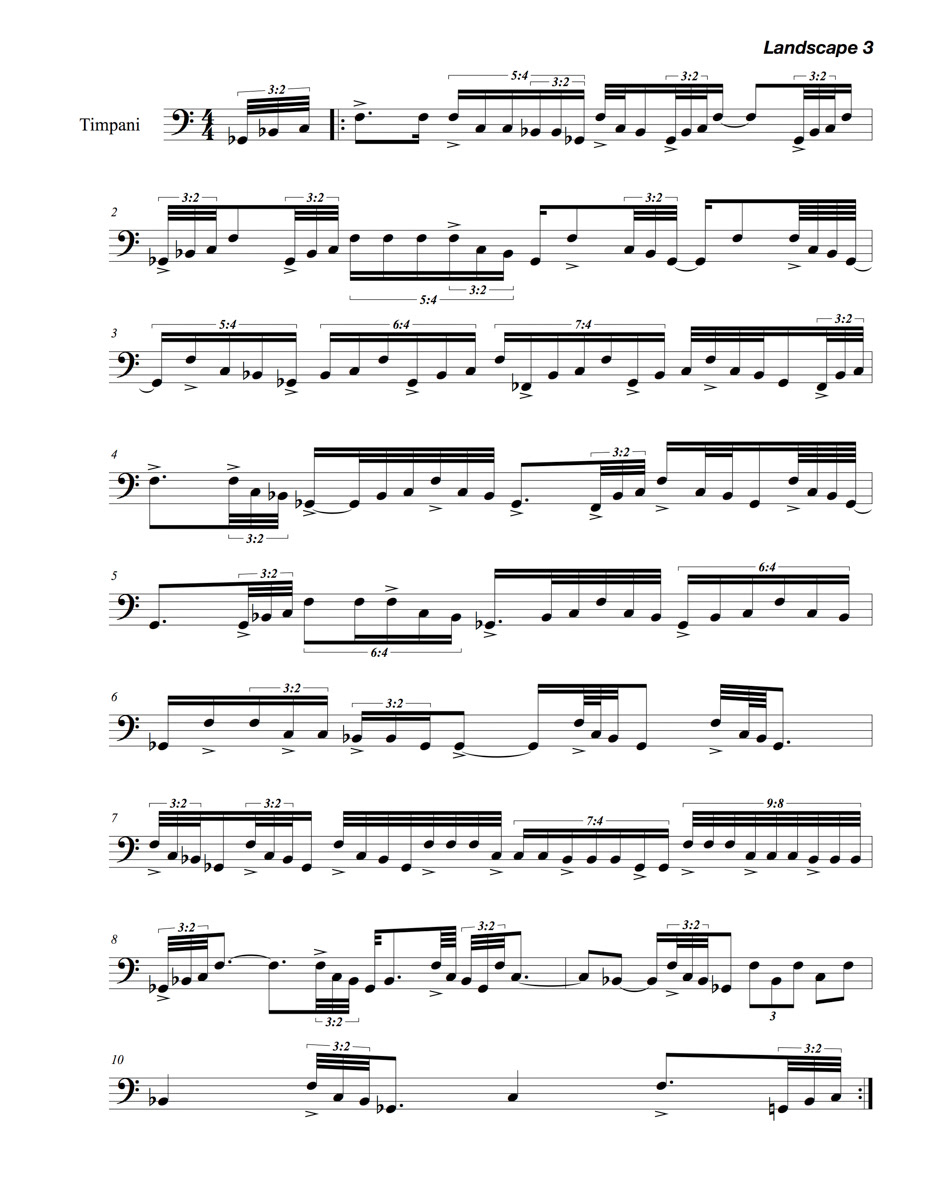GATHERALL, AN EXPERIMENTAL GAME FOR CROWD, VIRTUAL REALITY, AND TIMPANI. 2017. PERFORMANCE AT THE WALT DISNEY CONCERT HALL FOR HACK MUSIC LA.
Gatherall, LA Phil was conceived as a means of using the space, a team of collaborators, and the audience as an experimental platform and catalyst for group flow and emergent behavior. An original musical score was composed for the timpanist as was four environmental landscapes that, in the legacy of Walt Disney (the name of the concert hall), were cartoonish expressions of emotion. When the audience collectively moved or collectively stopped, a new landscape and piece of the score was delivered into the timpani's virtual environment to discover what relationship the "leader's" emotional space might have on the activity of the group and visa versa.
Performance organized by Gatherall
Video installation and Facilitation / Jesse Fleming
Facilitation / Grant Shumate
Choreographer / Laurel Jenkins
Composer / Lewis Pesacov
Musical Performance / Joseph Pereira
Virtual Reality / Eric Fanghanel, Stalgia Grigg, Kristin McWharter
Interaction Design / Kristin McWharter
1. The crowd plays a "move and freeze" exercise, keeping time with a metronome and reacting to the music being performed by the timpanist. When one person starts moving, all need to start. When one stops, all need to stop.
2. The crowd's movement in the space determines the changes in the VR landscape and musical score.
3. The timpanist wears a VR headset. When the crowd moves the timpanist is given a score to play and when the crowd freezes the timpanist holds a note.
4. Metronome playback over a loudspeaker keeps tine and synchs the crowd with the the timpanist.
Notes for timpanist:
1. Instrumentation: Four pedal timpani, stardard sizes.
2. Sticks: Sticks should be choosen to bring out the most resonant tonal qualities of the drums.
3. Striking positions: Use a wide variety of striking positions to produce varying sound qualities.
4. Tempo: q = 50 but feel free to push and pull against the metronome as you like.
5. VR: Respond to the varying emotional landscapes of the VR experience by interpreting the dynamics, expressive and tonal qualities of the music. Exaggerate your reactions.
6. Move: On "Move" play the score as you see it in the VR headset. The duration of each score is controled by the group, so it is of an undetermined duration. Follow the repeats as necessary.
7. Freeze: On "Freeze", roll any note (or notes) but do not change notes. The speed, dynamic, tonal and expressive qualities of the roll should be determined by your response to the VR landscape.
